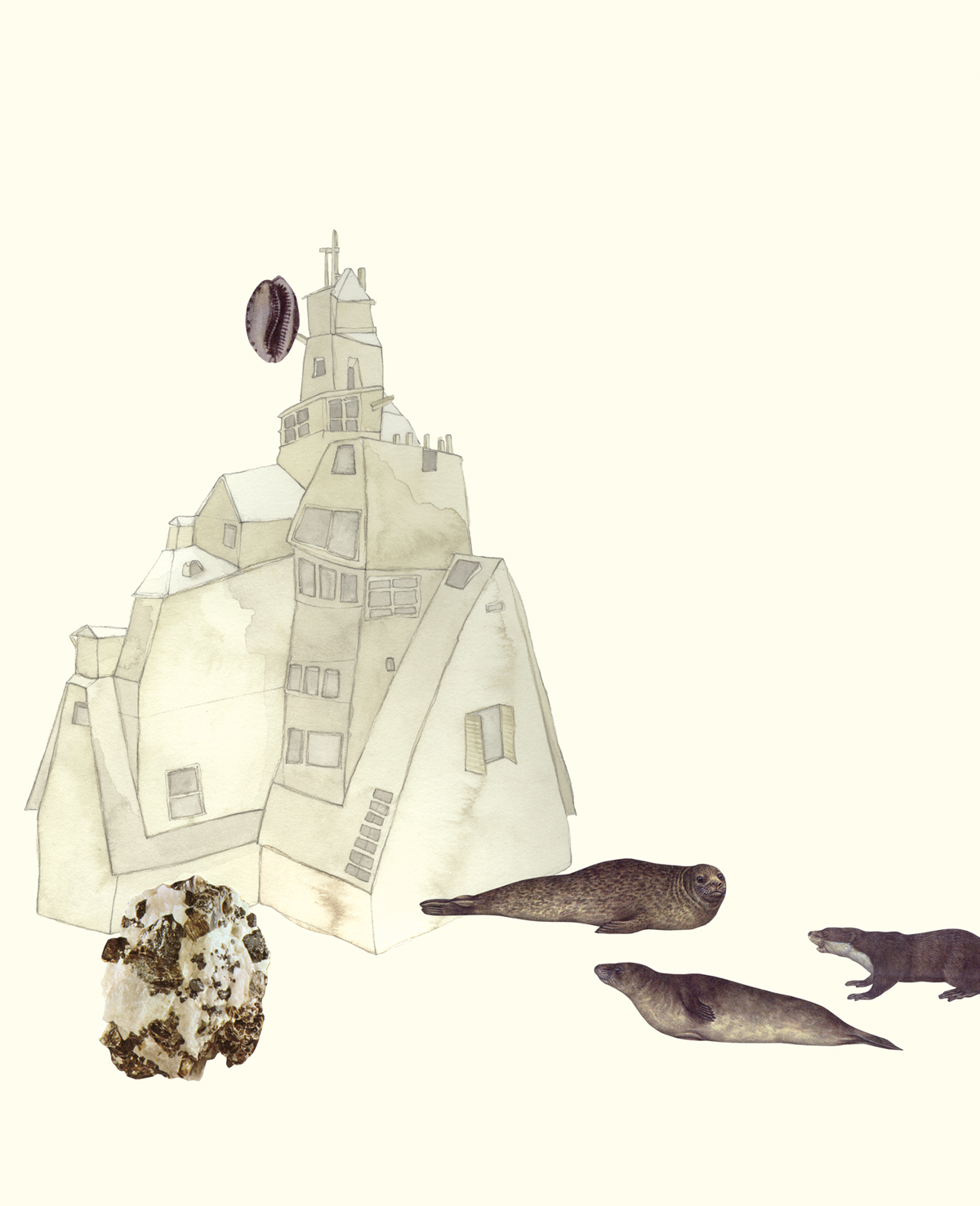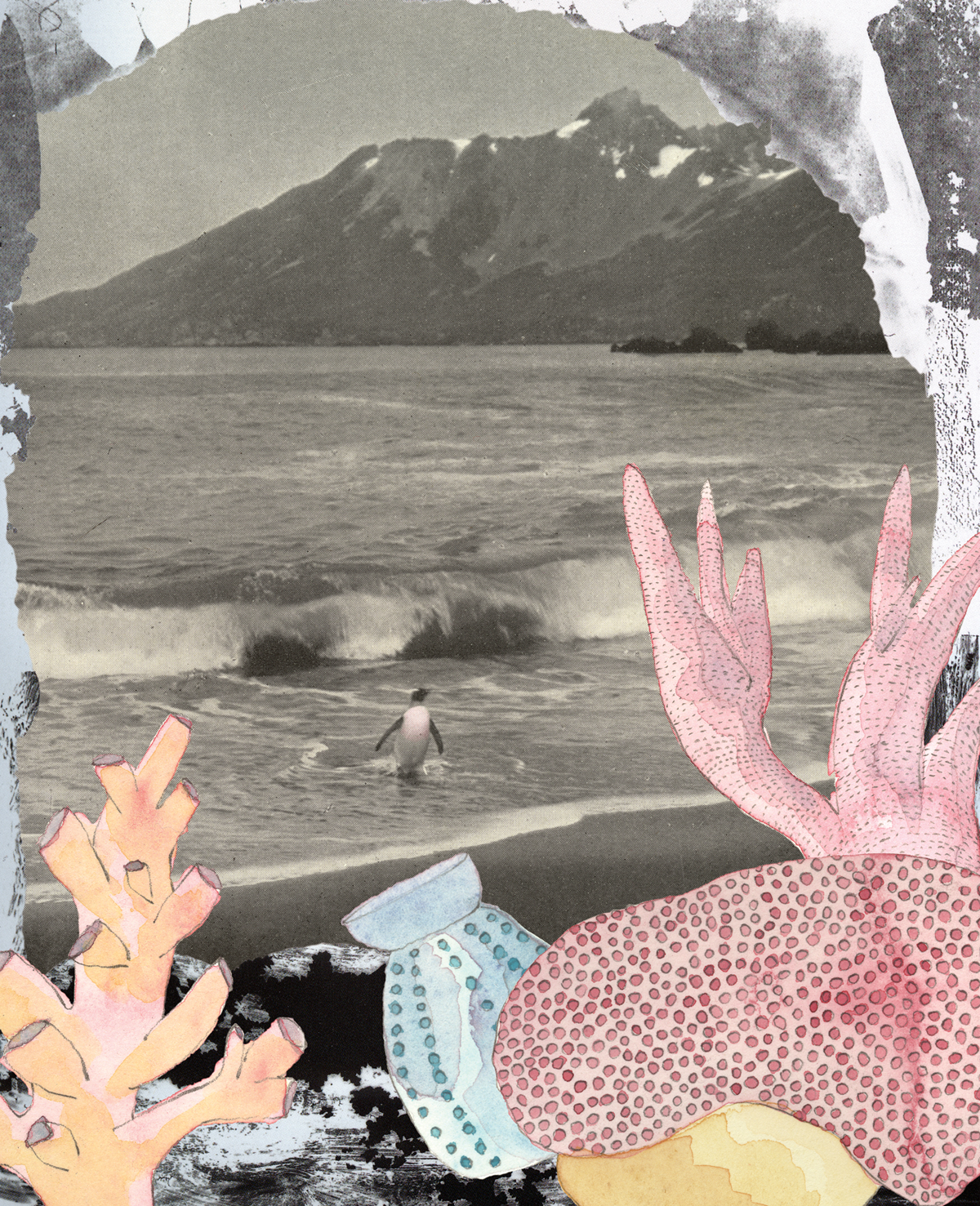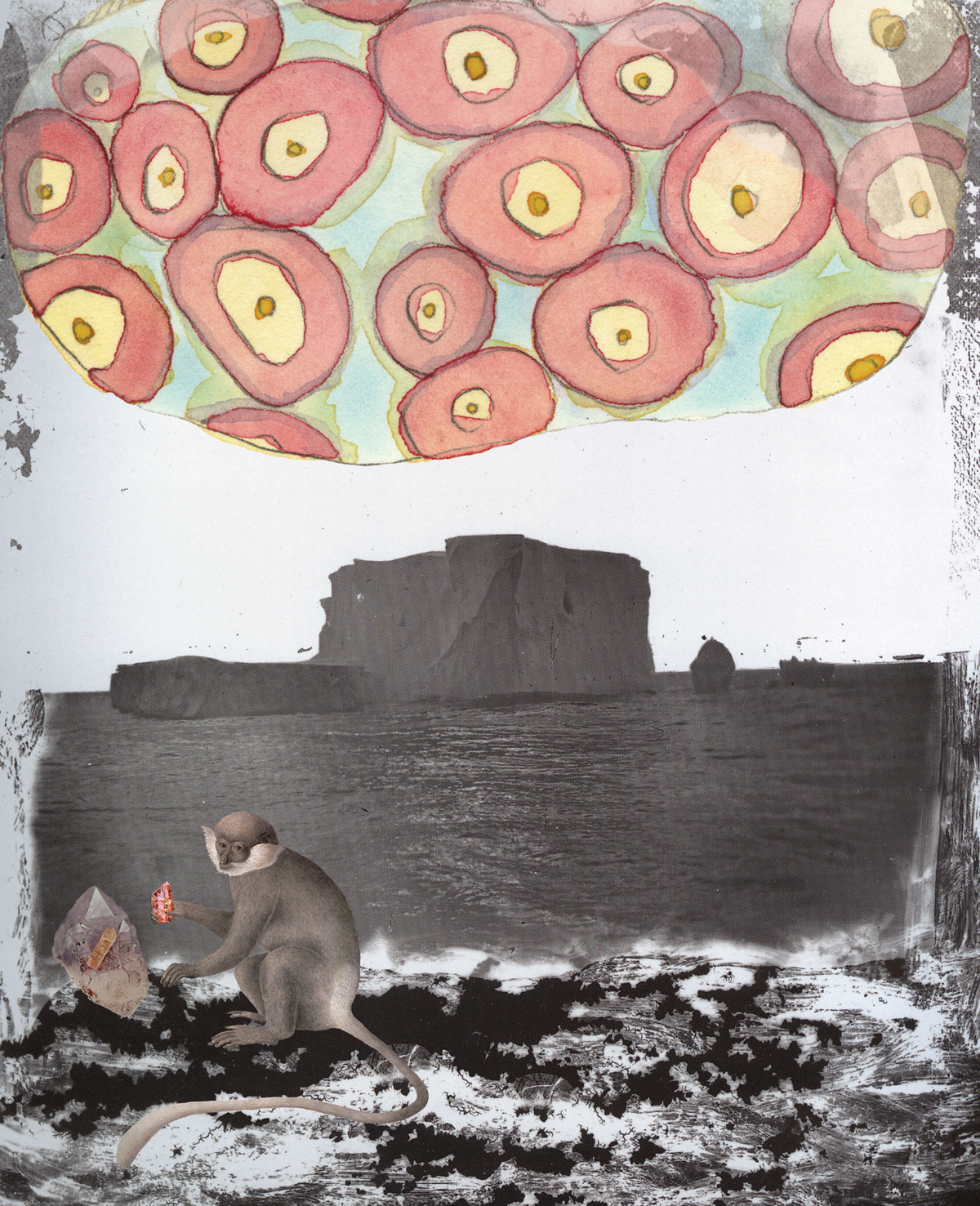THREE POSTERS, 2007–2008
For Mailbox 141 and Moving Galleries.
Gracia Haby & Louise Jennison
My Dacha is 13 storeys higher than yours
You know this isn’t the way home, don't you?
and
First time ever I saw you (Antarctica)
2007–2008
Three posters (60cm X 43cm in size) on adhesive backing, exhibited on twenty Melbourne Connex trains throughout 2007–2008
For Mailbox 141 and Moving Galleries
All three posters incorporate elements of collage alongside watercoloured forms both real and imagined. My dacha is 13 storeys higher than yours features Nikolai Sutyagin's thirteen-storey dacha in Arkhangelsk, Russia, with three potential new inhabitants from the animal kingdom, displaced and in search of a new home. You know this isn't the way home, don’t you? depicts a lone penguin in search of a new home, a singular fisherman seeking a new beginning. And one of the first photographs of the Antarctic icebergs can be seen in First time ever I saw you (Antarctica).
“Congratulations to artists Gracia Haby and Louise Jennison. Gracia and Louise’s winning collaborative entry You know this isn’t the way home don’t you? was most voted for by the public.”
If you can’t make the trains run on time, then perhaps you can keep customers happy by improving what’s on the walls. Now, as well as graffiti, there's poetry and art, writes Charlotte Francis.
Towards New Trains of Thought
The Age A2, Saturday, 15th March, 2008
Charlotte Francis
The Age (full story)
“How lovely it is to see creative work on the bare, bland walls of the city trains,” enthuses commuter Helen Musarsa, a 57-year-old drug and alcohol clinician. It was the sterile commuter experience that prompted lawyer Stuart Weir, in 2005, to think of a way of using the empty spaces in Melbourne’s train carriages to display art. Cross-town synchronicity was at play: while Weir was working up his public art concept, poet and novelist Lia Hills was organising a meeting in a Carlton pub with fellow poets, Myron Lysenko and Matt Hetherington, to discuss ways of getting poetry onto suburban trains. Introductions were organised through the Committee for Melbourne’s Future Focus Group and Weir and Hills discovered further coincidences: they shared the same age, 39, were both New Zealanders, and they had both been inspired by London's “Poems on the Underground”.
Hills initiated the poetry section of an initiative that became Moving Galleries: a three-year project giving emerging and established Victorian artists and poets the opportunity to display their work on Melbourne's trains. After an initial pilot in 2006, the project was launched in October 2007 with funding from Connex, the Department of Infrastructure and the Committee for Melbourne. Eighteen artworks and 36 “rooku” poems (an Australian variant of the short Japanese form haiku) are now on display in 40 trains as part of the project's spring 2007 exhibition. Moving Galleries will run biannual exhibitions in spring and autumn each year.
“The good thing about this project is that it puts art and poetry under the noses of the travelling public, who may not think of going to an art gallery,” says Weir. The artists also appreciate the public exposure: “It’s pretty special having your work displayed on a train,” says 24-year-old artist Beth Arnold. Unlike London’s Poems on the Underground, Moving Galleries encourages travellers to get involved by voting online for their favourite works. Voting for the spring People’s Choice Award closes on April 15 and the winning artist and poet will receive $500 each.
In a city that prides itself on its sleek, glass-fronted, hallowed halls of art, Moving Galleries offers a refreshingly democratic approach. All of the artists chosen for the exhibition are members of local artist-run initiatives known as ARIs that provide support and exhibition venues for the artistic community. As a travelling exhibition, Moving Galleries captures the transient and experimental nature of artist-run spaces which can range from a room in a private house to parklands, street posters, bars or laneways.
The works currently on display were selected from 200 submissions and represent a broad mix of media including digital, watercolour, collage, print and oil. The fabric of inner city life is a recurring theme in some of the works: Arnold’s photograph, Discarded Object, captures one of the more quirky Melbourne sights: a pair of shoes thrown over a power line in ACDC lane. Others vary widely in their subject matter: in two untitled works, 22-year-old Eleanor Yap looks at the presence of nature in our daily lives, while Emily Ferretti, 25 and a recent graduate from the Victorian College of the Arts, confesses to an obsession with singling out domestic objects. Her work, Spooning, is a whimsical arrangement of tea cups that look as if they are about to topple over.
Like Arnold, some of the artists chose a work that reflected a strong sense of locality. Siri Hayes, 30, was inspired to photograph a landscape at Merri Creek near to where she lives as it reminded her of the stage of a classical ballet. Using this framing device her picture of two figures standing on a willow- and poplar-lined creek bank hints at a narrative and refers to European and Australian influences. Thrilled when a friend spotted Crossing the Merri on the way to work, Hayes says, “I love it when art becomes something people don't have to make an effort to go and see.”
Gracia Haby and Louise Jennison, both 32, submitted an existing work, but also created two new works. The first, You know this isn't the way home, don't you?, uses photo-montage and watercolour to create a multi-layered image exploring the theme of displacement. A lone penguin is in search of a new home and the work suggests new worlds and new beginnings. “Our aim is to hold people's attention immediately and then sustain them for the journey,” explains Jennison. The second work, First time ever I saw you (Antarctica), will be shown in the autumn exhibition, which opens in May.
....
Submissions for the poetry section of the autumn exhibition opened on March 1 and train users are being encouraged to flex their creative muscles and experiment with a variety of poetic styles; from rooku to sonnets, free verse to sestinas. Weir and Hills hope that Moving Galleries will develop into a permanent feature of the Melbourne arts scene enhancing and celebrating the city’s long tradition of philanthropy and civic pride.


